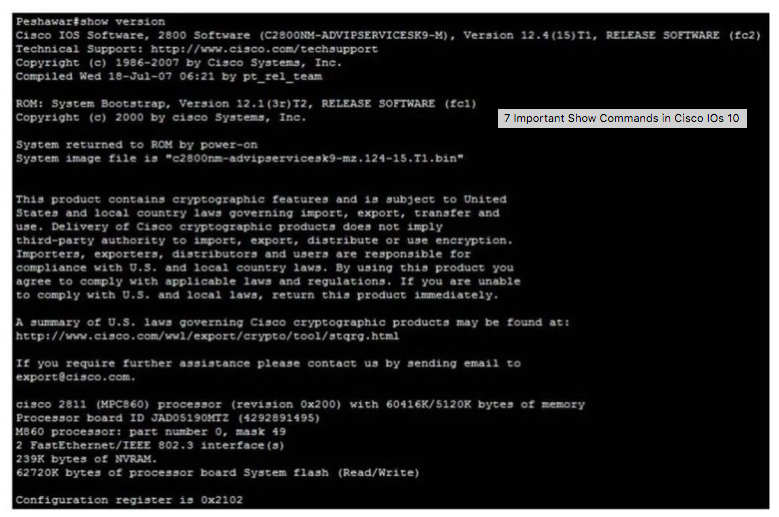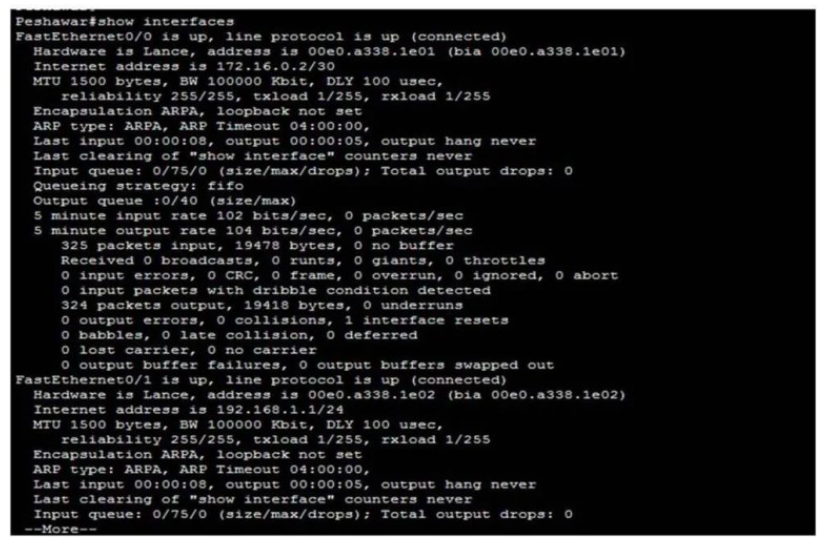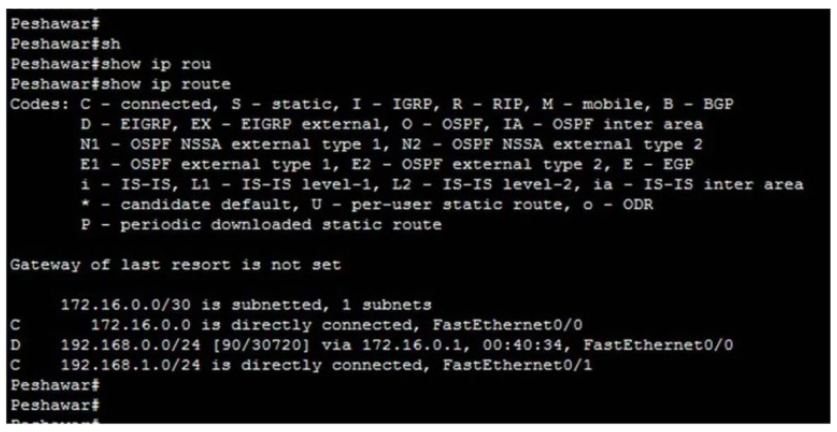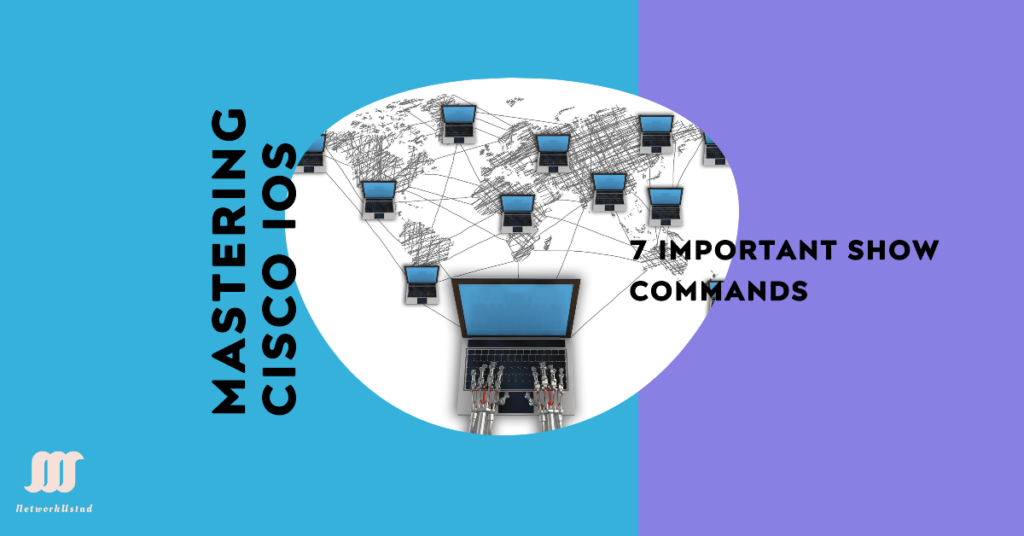7 Important Show Commands in Cisco IOs
The Show commands display important information about the device’s configuration and operation in Cisco IOs Command Line Interface (CLI) mode. Network administrators can use different show commands to check device status, interfaces, processes, and configuration files to confirm the device’s operational status.
The network administrator can also view the router’s process and function and verify it using show commands. The important show commands of Cisco IOS are the following:-
- show version
2. show running-config as well as show startup-config
3. show arp
4. show interfaces
5. show protocols and also show ip protocols
6. show ip route and show ip interface brief also
7. show cdp neighbours
Show Commands Details
show version
The show version command on the Cisco router displays hardware information. The command output gives insight into the router’s capabilities. The abbreviation of this command is sh ver. The output of the show version command consists of the following unique information:-
- IOS version
- Image filename
- System uptime
- Type of processor and also show the amount of RAM
- Number of ports on the switch
- Amount of flash memory
- Current configuration register
The figure below illustrates the output of the show version command on the Cisco router.

Show running-config
We can use this command to display the configuration information running on the terminal. We can also use this command with the show startup-config command to compare the information in running memory to the information stored in NVRAM or a place specified by the CONFIG_FILE. The abbreviation of this command is sh ru
show arp
This command displays the router’s ARP table. The ARP table contains the resolved IPv4 address to MAC address mappings. If a host can’t ping? Ensure you’re getting an arp entry of the host that you want to ping using the “show arp command“. The abbreviated command is Sh ar
show interfaces
The show interface command displays all types of interfaces with configuration and statistics. Its output provides a lot of information. The abbreviation of this command is sh int. The figure below illustrates the output of the show interface command.

show protocols
This command displays the status of the configured layer three protocols on all Cisco router interfaces. This command can be abbreviated as sh prot
show ip route
The show ip route command is used to show the router’s routing table. The routing table lists all networks the router can communicate, their metrics, and how to communicate with them. This command can be abbreviated with sh ip ro. The command also has parameters after route (to), like sh ip ro rip for all RIP routes. The figure below illustrates the output of the show ip route command

show ip interface brief
The show ip interface brief is one of Cisco devices’ most frequently used commands. This command provides an abbreviated output compared to the show ip interface command. It outlines the key information for all the network interfaces on a router. The figure below illustrates the output of this command.
The output displays all router interfaces, including the IP address assigned interfaces, if any, and their operational status. The show ip interface brief command can also be used to verify the status of the switch interfaces.
Show CDP neighbours
We can use this command to display information about currently connected Cisco devices. Cisco Discovery Protocol (CDP) is a proprietary protocol that will only detect Cisco products. To show detailed information about neighbouring devices discovered using CDP, use the show cdp neighbours command in privileged EXEC mode. The command can also be abbreviated with sh cd ne.
FAQs
Q1: What are Cisco IOS show commands?
A1: Cisco IOS show commands display a Cisco device’s current status and configuration. They provide valuable information for troubleshooting and monitoring network performance.
Q2: Why are show commands important for network administrators?
A2: Show commands are important for network administrators because they help diagnose problems, verify configurations, and ensure the network runs smoothly. They also provide insights into various aspects of the network, such as interfaces, routing tables, and device status.
Q3: Can you list some common Cisco IOS show commands?
A3: Some common Cisco IOS show commands include:
show ip interface briefshow versionshow running-configshow ip routeshow interfacesshow vlanshow cdp neighbors
Q4: How do I use the show ip interface brief Command?
A4: The show ip interface brief command provides a summary of the interfaces on a Cisco device, including their IP addresses and status. It is useful for quickly checking the status of all interfaces.
Q5: What information does the show version command provide?
A5: The show version command displays information about the Cisco IOS software version, device uptime, system image file, and hardware details. It is useful for verifying the software and hardware configuration of the device.
Q6: How can I view the current configuration of my Cisco device?
A6: You can view the current configuration of your Cisco device using the show running-config command. This command displays the active configuration that is currently running on the device.
Q7: What does the show ip route command do?
A7: The show ip route command displays the routing table of the device, showing all the routes known to the router and how they were learned. It is useful for understanding the routing decisions made by the device.
Q8: How can I check the status of a specific interface?
A8: You can check the status of a specific interface using the show interfaces command followed by the interface identifier (e.g., show interfaces GigabitEthernet0/1). This command provides detailed information about the interface, including its status, errors, and statistics.
Q9: What is the purpose of the show vlan command?
A9: The show vlan command displays information about VLANs configured on the device, including VLAN IDs, names, and associated ports. It is useful for managing and troubleshooting VLAN configurations.
Q10: How do I use the show cdp neighbors command?
A10: The show cdp neighbors command displays information about directly connected Cisco devices discovered using the Cisco Discovery Protocol (CDP). It provides details such as device IDs, interfaces, and platform information.

